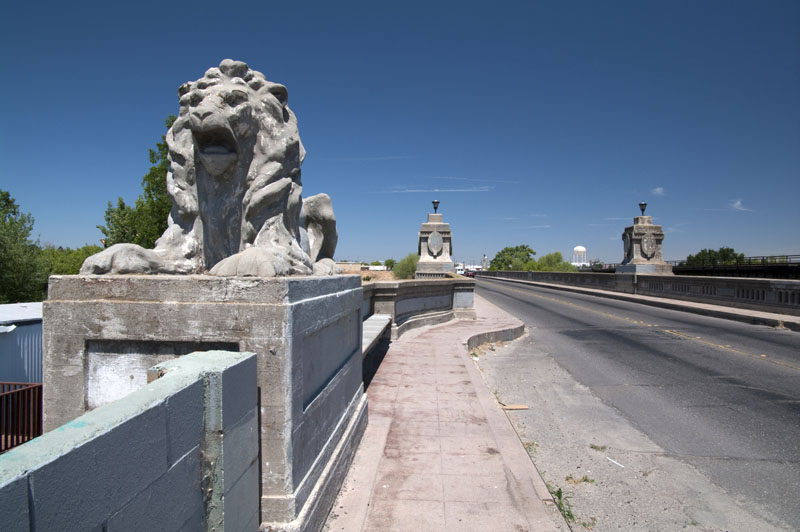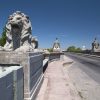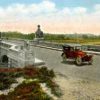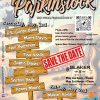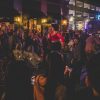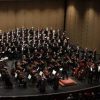HistoryView: Save the 7th St Lions
Publisher’s Note: ModestoView promotes planning for the future by respecting and celebrating the past. This month, we combine our Design View and HistoryView with an beautiful piece by Gavin Bruce. The 7th St Bridge is slated for demolition to be replaced with a basic structure, but we can still save the Lions, and create a gateway or incorporate them into the design. Please help support this. Comment here www.7thstreetbridge.org We can build our history into the future. – Chris Murphy
The 7th Street Bridge Story
By Gavin Bruce
The afternoon sun beats down on the iconic lions of the 7th Street Bridge as they lounge lazily soaking in the scorching rays, but remaining ever vigilant as they have for a century. Their battered stone faces are now barely reminiscent of the fierce beasts they were crafted to represent, but their stoic eyes remain unchanged, unflinching, even in the face of the vandalistic atrocities they have been forced to endure during their reign. The bridge itself has become a monument of the poverty and neglect plaguing the banks of the Tuolumne River as it runs along the south side of Modesto. The structure seems to more appropriately resemble a relic from a dystopian wasteland than a treasured regional landmark.
Walking across the bridge highlights one’s awareness of the level of neglect. One part of the road bears a clean hole through the asphalt and the foundation has settled, causing a mismatch in the alignment of the concrete side railing. Beneath the fine masonry of the elegant arches are colorful spray-painted symbols and words that are illegible to anyone but the creators who thrashed them into existence. The graffiti overlaps in confused conflict over territory upon the stone walls. The dry dusty ground is no less decorated. It is covered in a soiled mosaic of used syringes, empty bottles, condoms, and any other imaginable artifacts of vice.
But upon setting eyes on the Lion Bridge, as it is also known, one cannot help but imagine it in its heyday. When it opened in 1917, the world was experiencing many dramatic conflicts and changes. Europe was engulfed in the flames of the First World War, Russia erupted into revolution, Puerto Rico became a U.S. territory, the first Jazz record was released, streetcars began operating in San Francisco, a march of 10,000 African Americans took place in New York to protest lynching, and forty one suffragists were arrested in front of the White House while demanding voting rights for women. And it was during this tempestuous time that the 7th Street Bridge was opened to traffic.
On the day of the christening, the trees waved at one another along the banks of the Tuolumne River as the breeze passed through their leaves and wafted the sweet smell of early spring blossoms upon the citizens of nearby towns. Hundreds of onlookers had gathered on the 22nd of March, 1917 to witness the opening of the new bridge. This 1,250 foot long structure provided the only crossing on this stretch of river. It would prove to be an important link in the bustling chain of commerce and travel that flowed like an electric current between Los Angeles and San Francisco.
The gurgling engines of Model T’s and the crisp clopping of horse hooves added a percussive quality to the brass marching bands that had led two simultaneous parades from Ceres and Modesto. They congregated upon the bridge, high above the clear, swirling waters of the Tuolumne. Among the festivities were speeches from prominent local leaders, band music, and a performance from a children’s choir. Due to Stanislaus County’s public abhorrence and condemnation of alcohol at the time, the traditional bottle of champagne that would be typical in a christening was substituted for milk, which was cast upon the bridge in a gesture of civic pride.
The bridge was designed by a San Francisco architect named John Leonard, for the purpose of providing a river crossing on Highway 99. Prior to this permanent structure, the only other options for crossing this stretch of the Tuolumne were either ferries, or a crudely constructed bridge that was washed away during a heavy storm.
While the bridge is a fine piece of engineering art in itself, the lions are what really make it unique. The idea for the lions was first proposed by George Harding, one of the bridge workers. Lions, interestingly enough, were a common feature in Italian architecture in the 14th through 17th centuries. They were regarded as symbols of strength and their likenesses were used to guard important links along trade and travel routes. Despite the symbolic significance of lions, local farmers tried to convince the builders to instead include statues of cows, but to no avail. County Surveyor Edgar Annear, who oversaw the project, convinced them that the lions were more “noble.”
Although only 100 years old, the lions seem to posses a mysterious quality more commonly associated with sculptures of the ancient world. Indeed, there are long forgotten stories about them. One interesting myth was conjured up in the Jazz Age, when rambunctious young drag racers would tell their girlfriends that every time a virgin crossed the bridge, the lions would stand up and roar. And over the course of a century, how many local children, in the infinite depths of their imaginations, have feared this animation of these kings of the Tuolumne?
Even the original artist who crafted the statues is unknown. There have been at least a few over the years who claimed to have met the artist. While there is some speculation as to the exact identity of the craftsman, it is generally accepted that the lions were sculpted in the basement of an Italian artist in San Francisco, although his name remains a mystery.
The lions upon the 7th Street Bridge have seen many an era come and go. They were there at the end of the First World War, they witnessed the Roaring 20’s, the Great Depression, and the droves of Dust Bowl migrants. They looked on as numerous young men and women departed for Europe and the Pacific during the Second World War, they saw the street cruises and races of the 50’s and 60’s, the passing Flower Children on their way to San Francisco, the rise of drugs and gang violence, the exodus of life and commerce from Downtown Modesto, and its budding rebirth. For a century, the 7th Street Bridge and its lions have been a mainstay on the banks of the Tuolumne, a constant reminder of the roots and the history of the Central Valley and its residents, and an enduring monument to bygone generations who crossed its road and passed under the shadows of its four looming protectors.
The bridge still stands today where 7th Street crosses the Tuolumne River. It is slated to be destroyed and replaced. The projected year is 2018, 101 years after its grand opening.
gavinbruce57@gmail.com<mailto:gavinbruce57@gmail.com>
(209) 484-5933


